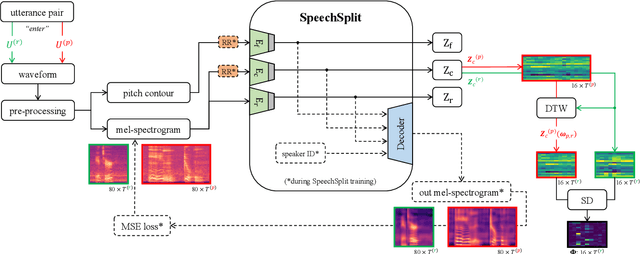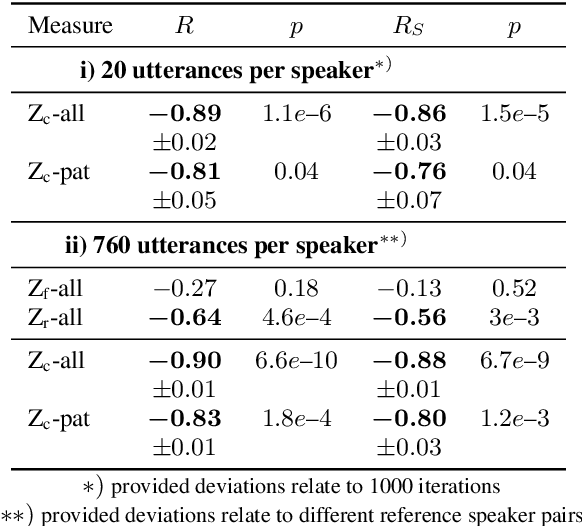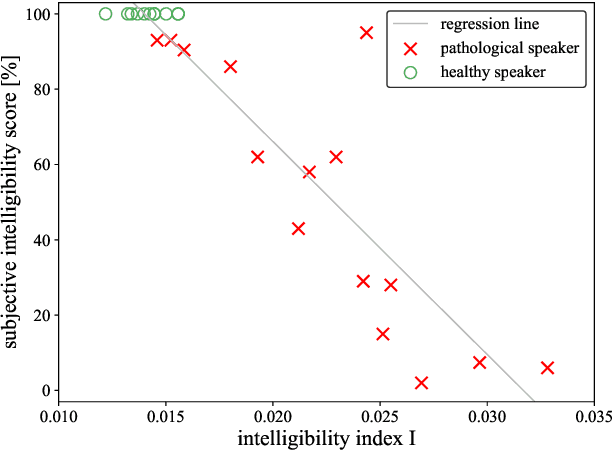Bjoern Heismann
Speaker- and Text-Independent Estimation of Articulatory Movements and Phoneme Alignments from Speech
Jul 03, 2024Abstract:This paper introduces a novel combination of two tasks, previously treated separately: acoustic-to-articulatory speech inversion (AAI) and phoneme-to-articulatory (PTA) motion estimation. We refer to this joint task as acoustic phoneme-to-articulatory speech inversion (APTAI) and explore two different approaches, both working speaker- and text-independently during inference. We use a multi-task learning setup, with the end-to-end goal of taking raw speech as input and estimating the corresponding articulatory movements, phoneme sequence, and phoneme alignment. While both proposed approaches share these same requirements, they differ in their way of achieving phoneme-related predictions: one is based on frame classification, the other on a two-staged training procedure and forced alignment. We reach competitive performance of 0.73 mean correlation for the AAI task and achieve up to approximately 87% frame overlap compared to a state-of-the-art text-dependent phoneme force aligner.
Disentangled Latent Speech Representation for Automatic Pathological Intelligibility Assessment
Apr 08, 2022


Abstract:Speech intelligibility assessment plays an important role in the therapy of patients suffering from pathological speech disorders. Automatic and objective measures are desirable to assist therapists in their traditionally subjective and labor-intensive assessments. In this work, we investigate a novel approach for obtaining such a measure using the divergence in disentangled latent speech representations of a parallel utterance pair, obtained from a healthy reference and a pathological speaker. Experiments on an English database of Cerebral Palsy patients, using all available utterances per speaker, show high and significant correlation values (R = -0.9) with subjective intelligibility measures, while having only minimal deviation (+-0.01) across four different reference speaker pairs. We also demonstrate the robustness of the proposed method (R = -0.89 deviating +-0.02 over 1000 iterations) by considering a significantly smaller amount of utterances per speaker. Our results are among the first to show that disentangled speech representations can be used for automatic pathological speech intelligibility assessment, resulting in a reference speaker pair invariant method, applicable in scenarios with only few utterances available.
 Add to Chrome
Add to Chrome Add to Firefox
Add to Firefox Add to Edge
Add to Edge